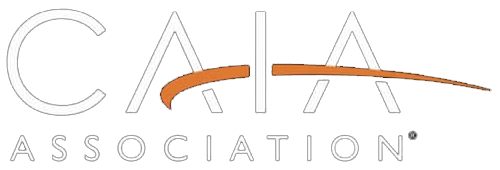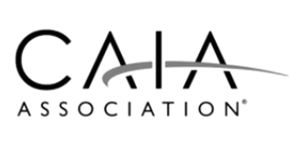By Aaron Filbeck, CAIA, CFA, CFP®, CIPM, FDP, Managing Director of Global Content Strategy, CAIA Association
& John Bowman, CFA, Chief Executive Officer, CAIA Association
The fourth stop on our eight-city Vision 2035 global listening tour brought us to New York City, the epicenter of private capital. While each roundtable offers a unique lens into regional dynamics of what’s happening in organizations around the world, this session stood out for its depth over breadth.
The approximately 18 CEOs, CIOs, and senior investment professionals overseeing trillions in AUM focused less on geopolitics and more on structural challenges reshaping their firms, boards, and strategies.
The Two-Legged Investor: Product Innovation Meets Incentive Misalignment
When asked what currently dominates their leadership team’s mindshare, the answer was resounding: private markets push into wealth management. As private markets scale into wealth management firms, it was clear that many felt that asset managers are rushing to get product on the shelf.
But this speed comes at a cost. Investors and product providers alike noted that firms are “solutioning” more than ever to win mandates, sometimes prioritizing innovation at the expense of rigor and appropriateness. One participant warned of “future disappointment sold on past returns.”
“Are we (the industry) moving too fast, and can it slow down, even if we wanted to?”
Since everyone is trying to get into the wealth management game, many firms are rushing to put as much product on the proverbial shelves as quickly as possible, a mindset that suggests that delivering product to wealth management is a zero-sum game (despite the allocations being small and the wealth being large).
Senior professionals on the allocator side agreed, suggesting that the amount of product development was concerning, particularly when there is often so much misalignment and mis-selling of what these products can do.
This will be increasingly important as private markets make material moves into Main Street, such as the recent push to offer products en masse across the defined contribution plan landscape in the U.S.
The conversation evolved into a critical tension: education vs. incentives. While everyone acknowledged the need for investor education, especially as private markets become more mainstream, the commercial pressures of first-mover advantage and shareholder expectations have seemed to take the driver’s seat.
As one participant observed, “We’re all talking about investor protection, but GP-stakes investors may actually benefit from subpar products, so who’s incentivized to slow down now?”
The Great Convergence: Blurring Lines without Shortcuts
The discussion then shifted to the so-called “Great Convergence," the merging of public and private markets, multiproduct platforms, and vertically integrated firms.
“Is any of this helpful to you?”
Asked whether this convergence made things easier for allocators, LPs were unequivocal: “No.” While consolidation may reduce the number of relationships, it does not simplify due diligence, sourcing, or the need to find the best solution for the portfolio.
Instead, the burden has shifted to data quality, systems integration, and full portfolio visibility. “I want to see our entire portfolio on my phone,” one CIO emphasized. Data was a hot topic for many around the table, as many of these systems still don’t speak to each other, and many did not have the in-house talent to solve these problems. This will likely be a focus in the coming years for LPs, in particular, who are dealing with multiple assets under one roof.
On the GP side, one participant noted that this convergence and evolution has led to one thing: “The fragility of the industry has never been greater.” In fact, they argued that many GPs who have not been equipped to make this transformation are likely already dead, we just don’t know it yet.
These are often skilled investors but ill-equipped to lead through platform transformation. Perhaps it’s an obvious statement, but good CIOs don’t always make good CEOs, and the importance of being able to make business decisions has become even more important in this increasingly complex world.
The best example of this might be the likely shakeout in the “middle market,” long buoyed by capital inflows and likely faces a reckoning. Without scale, specialization, or professional leadership, many may be swept into a wave of consolidation or obsolescence.
Some of this is merely due to the velocity of capital that has chased the “messy middle” from a business perspective. Across traditional asset management, we’ve seen the big get bigger and a collection of boutique, niche players emerge. Attempting to cross between the two is where trouble usually comes. In private markets, many believed that the middle market may just have too much money and is competing against itself at this point.
Putting It All Together: Solutioning
As the dust settles, the roundtable left us with three core takeaways:
For GPs, focus on your core competencies. Don’t chase breadth for growth’s sake. While tempting, being all things to all people is unsustainable and dilutes your edge.
For LPs, strengthen product diligence and adaptability. In a world where innovation still outpaces education, LPs must adapt to develop fast, reliable frameworks for evaluating new strategies. Further, ask yourself, “do I want to invest in this fund or buy a stake in the GP?”
For all leaders, investment expertise is no longer enough. This new era requires leadership agility, clarity, and systems/matrixed thinking. Great organizations will be led by those who can manage these transformations as well as portfolios.
Interested in our insights on our 2035 Vision from around the globe? CAIA’s leadership team provides an exclusive peek into candid conversations that are shaping the future of investing. Check them out below!
Mumbai – Feb 2025 | Los Angeles – Mar 2025 | Toronto – Apr 2025 | New York – Jun 2025 | Board of Directors - Sep 2025 | London – Sep 2025 | Hong Kong – Oct 2025 | Singapore – Oct 2025 | Riyadh – Dec 2025
About the Contributors
Aaron Filbeck, CAIA, CFA, CFP®, CIPM, FDP, is Managing Director, Global Content Strategy at CAIA Association. His industry experience lies in private wealth management, where he was responsible for asset allocation, portfolio construction, and manager research efforts for high-net-worth individuals. He earned a BS with distinction in finance and a master of finance from Pennsylvania State University.
John L. Bowman, CFA was appointed CEO for the CAIA Association in January 2025. He has devoted over 25 years to the asset management industry to recover the narrative of the value that the investment profession brings to society. He is a staunch public advocate for market integrity, long-termism, investor outcomes, diversity, human dignity and educational standards, as necessary ingredients to building a sustainable and healthy profession. John previously served as Managing Director for the Americas for CFA Institute, a region comprised of 40+ countries from Canada, the U.S., Central America, South America and the Caribbean. Before that, John was a portfolio manager for non-US equity strategies at both Boston Company and SSgA for several years. John is a prolific, speaker, writer and commentator, frequently keynoting industry conferences and appearing in investment and business publications such as the Wall Street Journal, The New York Times, Pension and Investments, Financial Advisor, The Independent, Wealthmanagement.com and CNBC. Bowman earned a BS in Business Administration from Mary Washington College and is a CFA charterholder.
Learn more about CAIA Association and how to become part of a professional network that is shaping the future of investing, by visiting https://caia.org/




